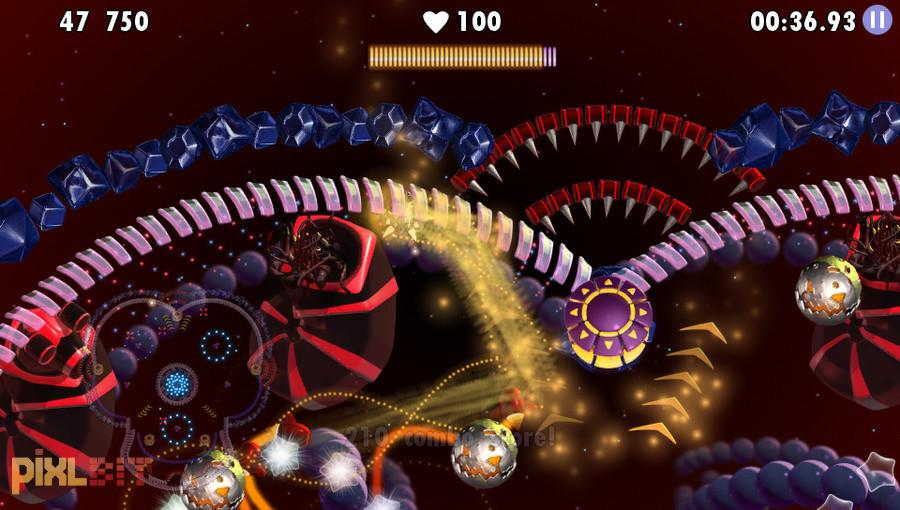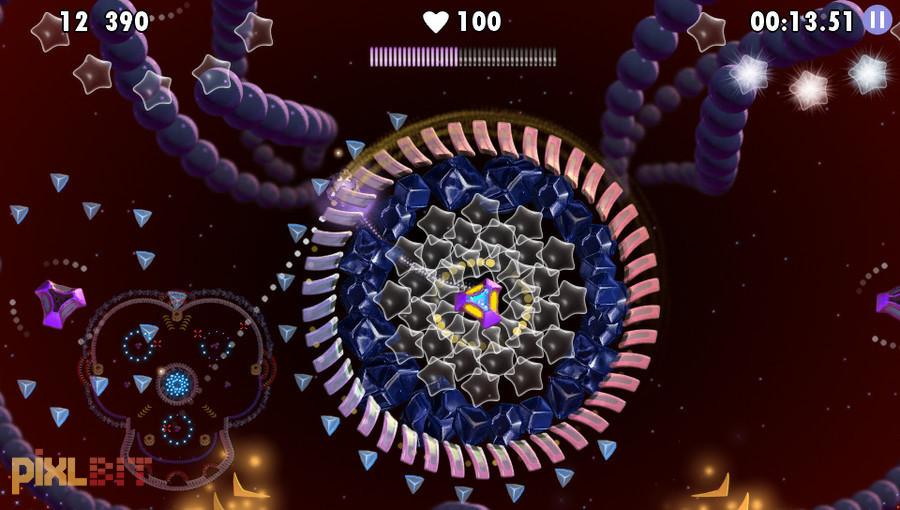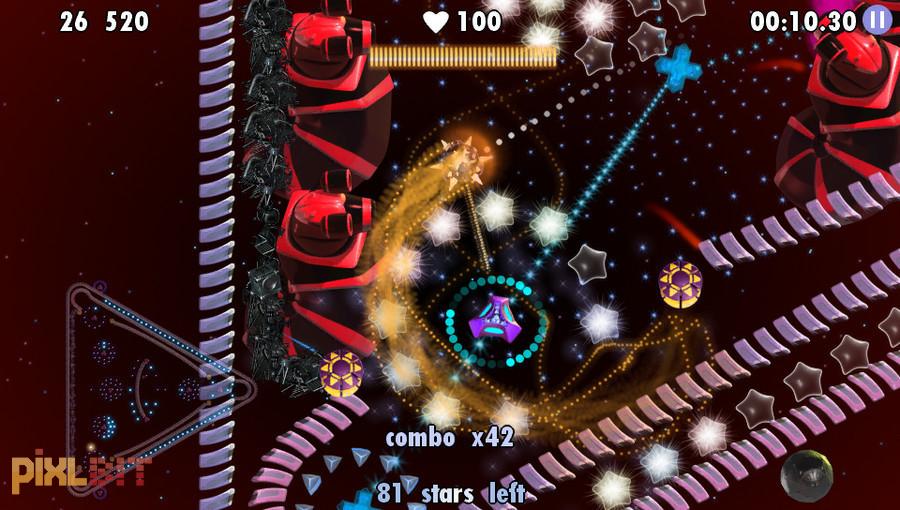Stardrone Extreme Review
|
|
See PixlBit's Review Policies

On 04/21/2012 at 08:57 PM by Nick DiMola Quick pick-up-and-play fun. |

A purchase worth making if you own a Vita that you take on-the-go. It’s a great deal of fun if you can approach it in your spare moments and only play a level or two at a time.
If you were to set Art Style: Orbient, Pinball, and a side-scrolling shoot-‘em-up on a collision course, the result would be StarDrone Extreme. It's an odd combination, yes, but one that frequently provides some quick thrills. However, like Plants vs. Zombies, StarDrone Extreme seems to suffer from being on the wrong platform. While fun in short bursts, the experience fails to engage for more than a level or two at a time.
StarDrone’s levels are all constructed for bite-sized consumption, with even the longest of levels only taking a few minutes to complete. Your task in each level varies from the simplistic age old goal of reaching the end, to illuminating all of the stars in the level, to collecting all of the gems or shards scattered about.
No matter the task, you’ll control the action in the same way. After initially launching your spherical craft in a given direction, it’s a matter of touching purple beacons on the screen to pull your craft into orbit. Upon letting go, the gravitational pull of the beacon will cease and you’ll continue in the direction of your forward momentum.
This most basic functionality works fine, but given both the speed of the game and the placement of the beacons, you’ll often find yourself blocking view of the action. Somewhat rectifying this issue is the fact that anywhere you touch on the screen will register with the nearest beacon, meaning you can keep your hands out of view while still performing the required task. Unfortunately, when more than one beacon at a time is on screen, using this methodology creates a new set of problems wherein your ship is pulled into the orbit of the wrong beacon. Although the rear touchpad can be used, thus solving your view problem, it’s an awkward way to control the game.
That being said, when things do work, they work beautifully. Despite the more reflexive underlying gameplay involved in steering the ship, from a puzzle perspective, it’s equally important to know how to properly navigate the level in order to register the fastest times. There’s no urgent need to strategize, making this more of an action-driven experience, but after completion of the core sixty-some-odd levels, you’re left with creating more effective strategies to bolster your scores.
This depth is born from the inclusion of a few other mechanics, most notably the zip tracks, the enemies, and the aforementioned stars. By illuminating stars strewn about the level, you not only build up your score, but also fill a meter, which when full converts your craft into a giant spiked-ball, capable of obliterating all enemies. The once obstacles now act as point-scoring opportunities, as killing them in succession will net a multiplied score.
For all StarDrone Extreme does right, it can be a frustratingly challenging experience. Gauging your trajectory after orbiting a beacon is by no means easy, and it’s easy to frequently miss your mark, resulting in an expedited death and the need to restart a level. This requirement of frequent absolute precision, particularly after the first two level sets, can make the experience tiring and redundant.
The level designs are inconsistently engaging as well. Within some you’ll be flinging your craft around like a pro, weaving throughout the level, while in others you’ll be aimlessly wandering to find all of the requested objects before moving on.
Make no mistake, StarDrone Extreme is fun often enough to justify its low price of $3.99. However, the high challenge and inconsistent levels hold it back from true greatness. Toss in the often frustrating results of using the front touchscreen and it’s evident that StarDrone Extreme doesn’t have the stuff necessary to take the market by storm.














Comments